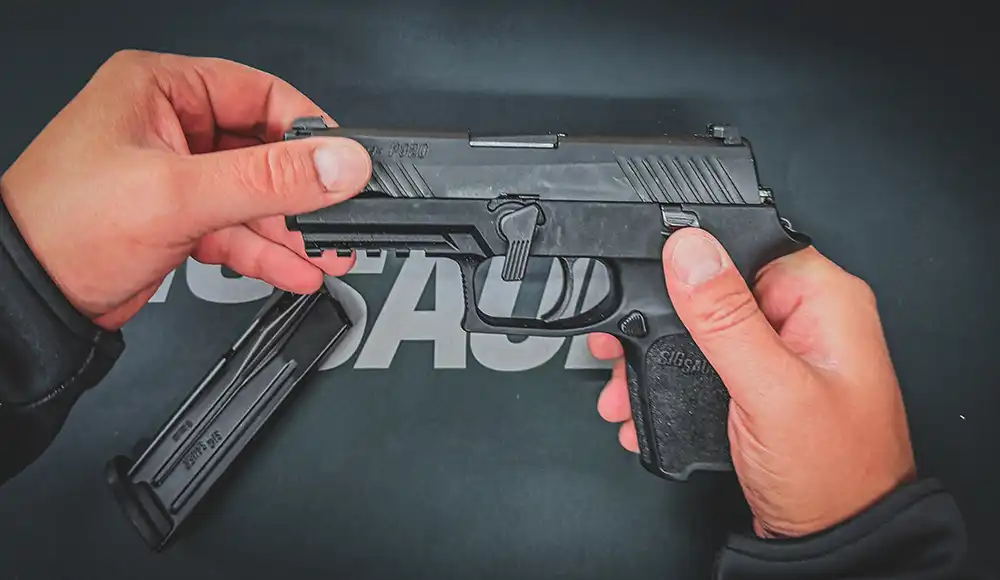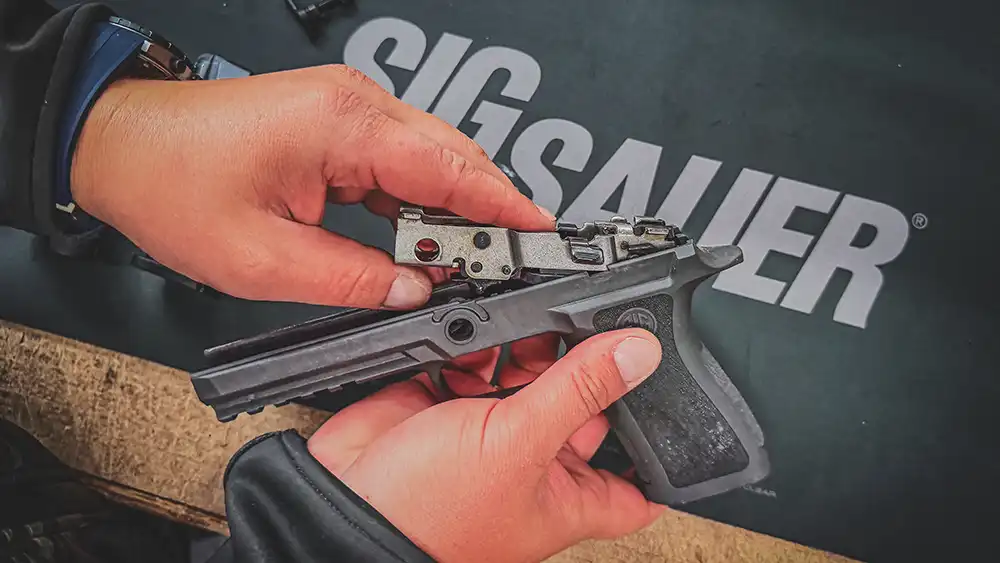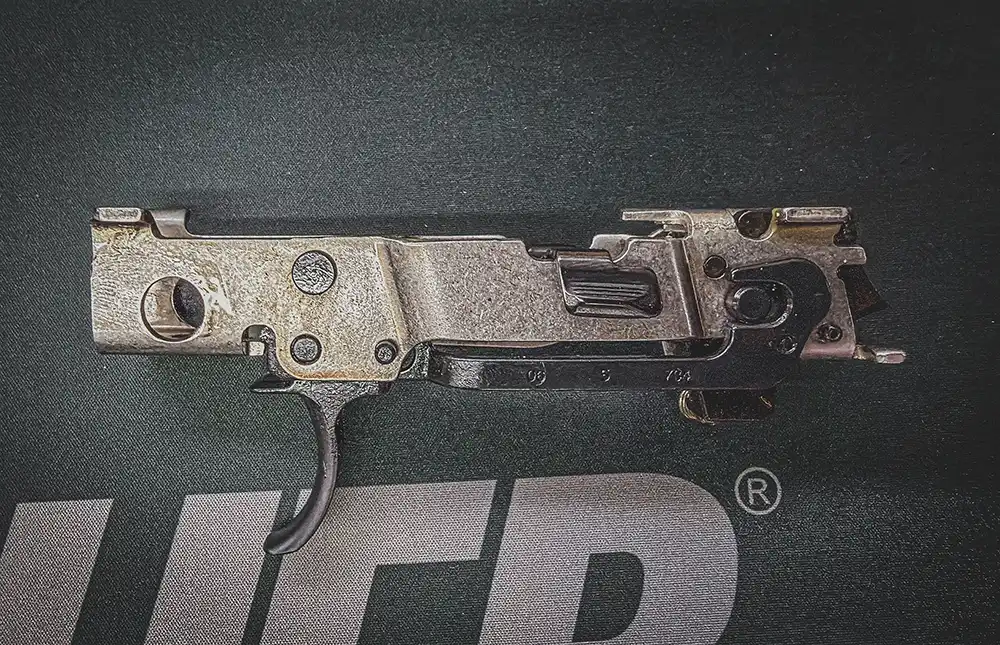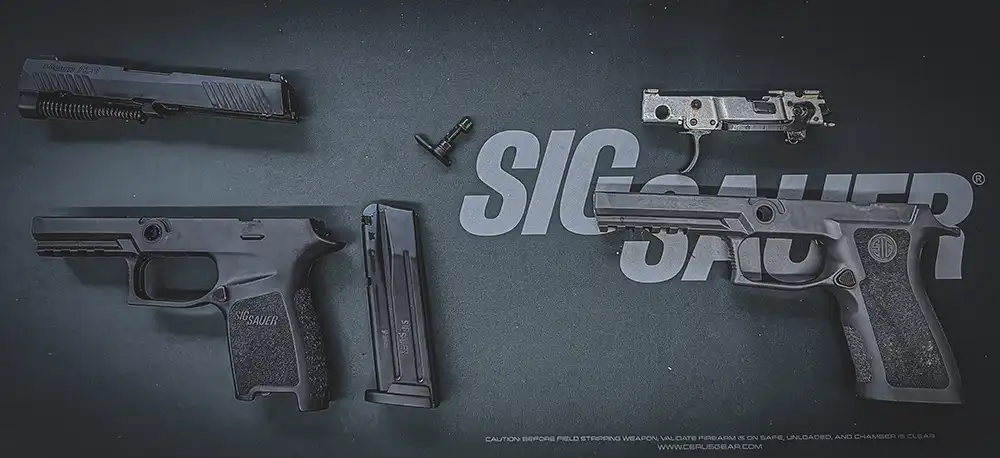Guide! The Finishing Shot — When Every Second Counts!
- Hans ARC
- Oct 22
- 5 min read

The finishing shot is the harshest part of the hunt. It’s the moment when experience, calm, technique — and ultimately the hunter’s decision — determine success or suffering. Jörg Burgstaller, veteran hunter, firearms expert and Austrian importer for SIG Sauer, speaks from decades of experience: “The finishing shot is not a random shot. Anyone who thinks you can just pick up a handgun and it’ll work out is gravely mistaken.”
Handguns only with sense and training
Legally, handguns in Austria are carried under strict conditions — and in hunting they are primarily used for tracking and finishing shots. Burgstaller emphasizes: “A weapons license and a valid hunting license are of course the legal prerequisites. But being legally allowed is not the same as being prepared.”
The reality: a finishing shot is dynamic, hectic, often in twilight — and at extremely short ranges. Burgstaller cites clear numbers: “In tracking scenarios we usually talk distances between 0 and 5 meters. Anything beyond that — ten meters, for example — is already a lot and can massively change the effect.”
That means: the handgun is, from a hunting perspective, a specialized tool that requires intensive practice. “Handguns are demanding — both in handling and in danger potential,” Burgstaller warns. “Anyone who never trained with a pistol will hit their limits quickly under stress.”

Dangers of point-blank shots
A shot at point-blank range carries its own, often underestimated risks: overpenetration and pass-throughs can endanger bystanders or reveal your position; bone or tissue fragments can create dangerous ricochets. Muzzle blast and recoil are felt much stronger at very short distances, and accuracy suffers from frantic movement and adrenaline.
There’s also a higher risk of merely wounding and not killing immediately. Practically, that means only take the shot when the firing line is absolutely clear, companions and dogs are at a safe distance, there’s a suitable backstop (or sufficient earth/vegetation to absorb the bullet), and the chosen caliber and bullet performance are suited for a reliable instantaneous hit at very close range.

Caliber choice - stopping power over fireworks
A central issue for finishing shots is ammunition selection. Burgstaller: “9mm has very limited reserves for finishing shots. My practical recommendation leans toward .45 ACP or 10mm Auto — because these calibers offer more stopping power and greater chances of success.”
Bullet choice is also important: full metal jacket versus expanding bullets — each has pros and cons in penetration and energy transfer. Burgstaller: “There is no miracle solution — but you should choose ammunition that reliably performs at short range without needlessly overpenetrating.”
Technique - modular, quick, reliable
SIG Sauer models like the P320 offer a practical advantage for hunters, Burgstaller says: modularity. “You can swap barrel, grip and modules — one firearm can be configured as a tracking gun or a training/sport gun depending on need. The Fire Control Unit is SIG’s heart.” Practically, that means a versatile solution for different tasks — provided you master every configuration.
Essential gear for a hunting handgun, according to Burgstaller, includes reliable aiming. A red dot or laser is often superior to simple iron sights for close-range work, plus a strong flashlight for low light, and a secure holster/carry system. “If you’re searching in the dark, you need light and aiming guidance — not experiments.”
Psychology - the invisible trajectory
More important than technique is the headspace. The psychological factor is huge. On a tracking mission stress rules: adrenaline, racing heart, time pressure. The decision to deliver the finishing shot is highly charged — not only technically but emotionally. Its consequences range from relief to long-lasting psychological strain.
That’s why the advice is clear: mental preparation:
Mental training and realistic practice scenarios on the range.
Deliberately following a routine: visual contact, a safe shot line, withdrawal options, emergency communication.
After the shot: stay calm, secure the firearm, provide proper care for wounded game — and talk openly with hunting colleagues.
Anyone who feels overwhelmed emotionally should not hide it: talking helps. Many hunters underestimate how much a dramatic finishing shot can stick with them.

Practical tips from the handgun expert
Train, train, train — especially under time pressure and in changing light conditions.
Close-range drills: targeted shooting at distances under 5 m, followed by tracking drills (safety first).
Reconsider caliber choice: 9mm is easy to handle; .45 or 10mm offer more stopping power.
Equipment: red dot/laser module + strong, reliable torch. Holsters that allow fast, secure access.
Ammunition: choose bullets matched to your goals — balance penetration vs. expansion.
Law & documentation: always act legally. If something goes wrong, document all measures after the shot and follow official/rescue protocols.

Preparation preserves dignity
The hunting finishing shot is more than a technical act; it’s profoundly human. Burgstaller puts it bluntly: “Anyone who takes tracking seriously prepares — technically and mentally. Then the handgun is a sensible tool. Without preparation it becomes a danger.”
In practice it’s not the gun that decides, but the shooter’s responsibility. Those who train, reflect and ready themselves psychologically give the game a quick end — and themselves the peace of knowing they acted rightly.
Which SIG Sauer models suit hunters?
SIG P320 (Modular) — the all-rounder for tracking & finishing shots

Modular, adaptable, easy to train with. The modular system lets you swap frames, barrel lengths and caliber modules — ideal if you want one platform that can be built for different tasks (tracking vs. stand hunting). Recommended calibers/setups: .45 ACP or 10 mm for better stopping power. Compact variants (Compact/XCompact) are easy to carry. Top choice for hunters who think modular.
SIG P220 / SIG 1911-Serie (.45 ACP) — heavy stopping power

“Old-school” power with strong stopping effect. .45 ACP platforms deliver much more mass transfer than 9mm, increasing chances of a clean finishing shot at very short ranges. The P227 is a modern alternative; the 1911 is classic with a crisp trigger. Good when your focus is on maximum stopping power — though weight and recoil must be considered.
SIG P226 (service-caliber variants) — proven and rugged

Long-time workhorses, easy to handle. Solid construction, many caliber options (.357 SIG, .40 S&W, 9mm). The P229 in particular is a compact service-style option. Rugged and reliable — useful when caliber and bullet choice are sensibly matched.
SIG 1911-Modelle (Custom/.45) — precise, if carried and trained with

Fine trigger, high hit potential for practiced shooters. Ergonomic, clean single-action trigger, excellent short-range accuracy.
For those who love the handling and don’t mind the weight.









Comments